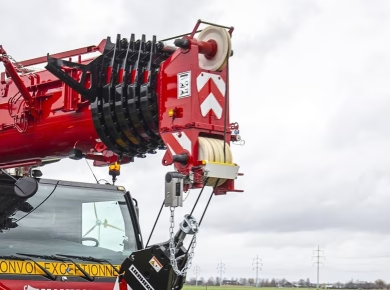When it comes to maintaining your vehicle, understanding the intricacies of its components can save you both time and money. One such component, often overlooked until it fails, is the fan clutch. This small device plays a crucial role in regulating engine temperature, and when it malfunctions, it can lead to overheating and other serious issues. If you find yourself needing to replace a faulty fan clutch, employing a fan clutch removal tool is essential. In this guide, we will explore how to effectively use this tool, ensuring you can tackle this task with confidence and skill.
Understanding the Fan Clutch
Before we dive into the removal process, let’s take a moment to understand what a fan clutch is and why it’s important. The fan clutch connects the engine’s cooling fan to the water pump, allowing the fan to spin and cool the engine as needed. When the engine is cold, the fan clutch disengages, allowing the fan to spin freely. As the engine heats up, the fan clutch engages, increasing the fan speed to improve cooling. If it gets stuck in one position or fails to engage properly, your engine may overheat, leading to costly repairs.
Recognizing the symptoms of a failing fan clutch is crucial. You might notice unusual noises when the fan is running, a drop in engine performance, or, in some cases, overheating. If you suspect that your fan clutch is faulty, replacing it is the best course of action, and having a specialized tool makes this job much more manageable.
Gathering Your Tools and Materials
Before you start the removal process, it’s essential to gather all necessary tools and materials. Having everything on hand will streamline your work and minimize interruptions. For this task, you will need:
– A fan clutch removal tool
– Ratchet and socket set
– Wrench set
– Screwdrivers (flathead and Phillips)
– Safety goggles
– Gloves
– Torque wrench
The fan clutch removal tool is specifically designed to grip and hold the fan clutch securely while you work on it, making the removal process much easier. Ensure that the tool is compatible with your vehicle model, as different cars may require different types of tools.
Preparing Your Vehicle
With your tools ready, the next step involves preparing your vehicle for the removal process. Start by parking your vehicle on a level surface and engaging the parking brake. It’s also a good idea to let the engine cool down if it has been running. This will not only protect you from burns but will also make it easier to work with various components.
Once the vehicle is secure, open the hood and locate the fan assembly. Before you dive into the removal process, take a moment to inspect the area. Look for any worn hoses or electrical connections that might get in the way. This is also a good time to disconnect the battery to prevent any electrical mishaps during your work.
Removing the Fan Clutch
Now that you’re prepared, let’s get into the nitty-gritty of removing the fan clutch. Here’s a step-by-step approach that can guide you through the process.
Step 1: Disconnect the Fan
The first thing you need to do is remove the fan from the engine. Depending on your vehicle, this might involve removing a shroud or other components. Use your screwdrivers and wrenches to carefully detach any fasteners holding the fan in place. Be cautious when handling the fan, as it can be heavy and awkward.
Step 2: Attach the Fan Clutch Removal Tool
Once the fan is out of the way, you can access the fan clutch. Position your fan clutch removal tool so that it grips the clutch securely. It’s essential to ensure that it fits snugly to avoid slippage during the removal process. Follow the manufacturer’s instructions for your specific tool to ensure proper setup.
Step 3: Remove the Fan Clutch
With the tool in place, it’s time to begin the removal of the fan clutch. Use your ratchet and socket to turn the tool counterclockwise. Depending on your vehicle, the fan clutch may be threaded on quite tightly. It may require some force to break it loose. Take your time and be careful not to damage the surrounding components.
If you encounter significant resistance, you can gently tap the tool with a hammer to help loosen the clutch. Just be cautious not to apply too much force, as this could cause damage.
Step 4: Clean the Area
Once the fan clutch is removed, take a moment to clean the area. This is a crucial step that many overlook. Any dirt or debris left behind can hinder the performance of the new fan clutch. Use a clean cloth to wipe down the mounting surface and remove any old gasket material if applicable.
Installing the New Fan Clutch
Now that you’ve successfully removed the old fan clutch, it’s time to install the new one. This process is just as important as the removal, and doing it correctly will ensure your vehicle runs smoothly.
Step 1: Position the New Fan Clutch
Begin by positioning the new fan clutch onto the water pump. Ensure that it aligns properly with the mounting holes. If your new fan clutch comes with a new gasket, make sure to place it in the correct position before you proceed.
Step 2: Tighten the New Fan Clutch
Using your fan clutch removal tool, tighten the new fan clutch by turning it clockwise. Again, ensure you follow the manufacturer’s specifications regarding torque settings. It’s essential to apply the correct amount of pressure; too tight can lead to damage, while too loose may result in the clutch coming off during operation.
Step 3: Reattach the Fan
With the new fan clutch securely in place, it’s time to reattach the fan. Follow the same procedure you used for removal, ensuring that all fasteners are tightened properly. Double-check your work to ensure nothing is left loose.
Final Checks and Reassembly
Once everything is reassembled, it’s vital to conduct a few final checks. Reconnect the battery and ensure all electrical connections are secure. Before starting the engine, spin the fan by hand to ensure it moves freely and is not obstructed.
After confirming everything is in order, start the engine and allow it to reach operating temperature. Observe the fan operation closely. It should engage and disengage as needed, providing the necessary cooling for your engine.
Conclusion
Using a fan clutch removal tool may seem daunting at first, but with the right approach and tools, it can be a straightforward task. Understanding the function of the fan clutch and taking the time to perform the installation correctly can save you both time and money in the long run. Whether you’re a seasoned mechanic or a DIY enthusiast, mastering this skill is an excellent addition to your automotive repertoire. Remember, the key to success lies in preparation, patience, and attention to detail. Happy wrenching!


